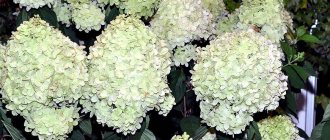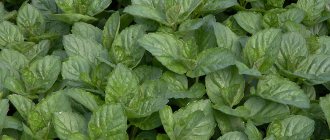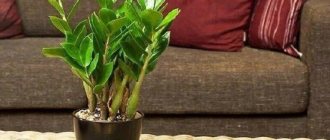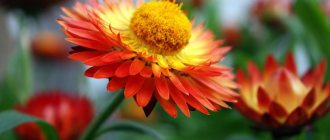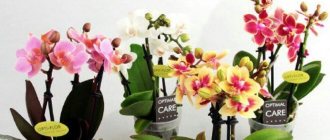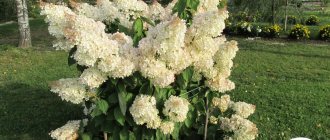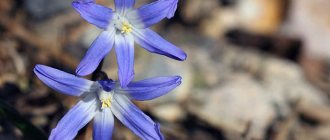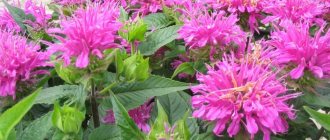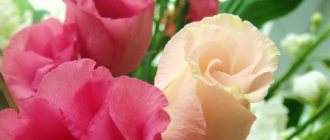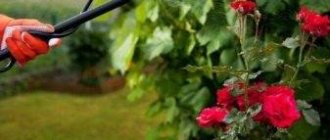Popular types
There are more than 200 species of columnae, many of which remain to grow in their usual habitat.
However, some types of these flowers have long spread throughout the world and are grown as decorative indoor plants on balconies, terraces, as decorations in flower beds and gardens. One of the popular types of columns is the Carnival type. This flower has many dense small leaves, which are covered with a glossy coating and fine whitish pubescence. Carnival flowers are bright yellow, but have a burgundy edge around the edges.
Allen's column came to us from Panama. This country, which is located in the south of North America, shelters in its jungle a beautiful plant, the flowers of which are quite large (about 8 cm) and have a red-orange color. The leaves of this species are small and elliptical in shape. The shoots are creeping or hanging, which are constantly increasing in size.
Columnae Krakatoa is probably the most common type of this plant in our country. It was bred by breeders specifically for cultivation and care at home. Krakatoa was bred from Banks Columnae, whose homeland is considered to be a huge part of South and Central America. Krakatoa got its name in honor of the volcano of the same name, which, when erupting, gives out all the same colors that can be seen when Columna Krakatoa blooms. The leaves of this flower have the shape of an elongated ellipse and are painted in a rich dark green color. This plant blooms with fiery red flowers reaching a length of 10-12 cm.
Columnea blood-red is also a frequent visitor to lovers of exotic ornamental plants in our country. This flower is slightly different from its counterparts: it has larger leaves (up to 30 cm), the flowers are formed in groups and have bright red pubescence, the shoots are woody and long (up to 1.3 meters). The mountainous regions of the Antilles are considered the birthplace of the blood-red plant.
Columnae Banks has fairly long semi-lignified shoots (length reaches 1 meter). The leaves are covered with a waxy coating, the underside has large red spots. The flowers are tubular, orange-red-yellow, reaching a length of 6 cm.
Columna Shida is native to the rainforests of Mexico. Shida has thick, bare shoots reaching a length of 1.5 meters. The flower grows as a bright representative of shrubs. It has oblong-oval, pointed, slightly pubescent leaves, the lower part of which is covered with reddish spots. Columna Shida blooms quite beautifully, has many flowers of a red-brown, yellow-beige hue (reminiscent of the color of a cheetah). From this type of flower, other subspecies have been bred through selection, which are widely used in decorative and landscape design.
Decorative varieties, as well as varieties of columna for the home
I recommend choosing a type of columna for your home that would be both unpretentious and maximally decorative at the same time. Some natural varieties do not meet both requirements at once. Therefore, below I will list the main species of the genus and give some recommendations. Some of them I really like. I will be happy to try to grow them in my collection.
Columnea Carnival - creates a real holiday in a small hanging pot. An incredibly beautiful variety with yellow flowers. Their limb or petals have a scarlet edging. This is one of the species with small leaves. They are densely located with each other. Therefore, the foliage looks like a voluminous green fur hat. The carnival column is in constant bloom. This does not depend on the time of year, only on the conditions of detention. The plant itself is a compact, neat-looking bush.
Columnae Krakatau - the lush flowering makes you think that the plant really looks like a volcano. This is a hybrid of the Banks variety. The variety grows up to 200 cm. The world loves the culture, which is why Krakatau is very popular. The leaves are no different from those of standard varieties. They are medium in size and green in color. Bright red tubular flowers are formed under the plates, collected in cluster-shaped inflorescences.
Red Robin is a columnar plant for growing in a hanging pot. It is the compact appearance and neat shoots with green leaves located opposite. The elongated flowers are bright red, longer than those of the type species.
Blood red columna is a subshrub with a flattened vine. In warm countries it is actively used in gardens. It is a domestic crop with rapid growth in our country. The bush is growing a lot. I recommend formative trimmings. They promote new flowering and the production of brighter flowers. The leaves of the variety are large and fleshy. The species is called blood red because carmine-colored spots are visible on the back of the plate. During flowering, small axillary inflorescences of scarlet buds are formed.
Sheidiana or Shida is a subshrub columna native to sunny Mexico. The variety is distinguished by long climbing shoots. There are light hairs on the surface of the stems. The leaves are long - on average 10-11 cm. Numerous flowers appear in winter. They are axillary and red. Inside is a bud tube, 6-7 cm long, with yellow spots and strokes.
Acute columna is the second name of Argut. These are epiphytic herbaceous perennials. The hanging stems are thick and dark red. They have opposite green small (3 cm in length) leaves. All parts of the plant are covered with small white hairs. The flower is up to 6 cm, formed in the axils of the leaves. Unlike many varieties, the buds are single and not in inflorescences.
Short-haired - columnea with yellow flowers. Its parts are covered with soft hairs. This makes the plant seem spectacular and pleasant even without flowering.
Columnea consanguina
Columnea consanguina is a flowering plant of the Columnea genus. They are endemic to Colombia, Costa Rica, Ecuador, Nicaragua and Panama. They are distinguished by the presence of red, translucent, heart-shaped markings that serve to attract their main pollinators, hummingbirds. Columnea consanguina is a shrub-like grass with an unbranched light brown and hairy stem that reaches a maximum growth of 1-1.5 meters in height. The leaves on the trunks are arranged in the opposite direction of the pattern along the stems. However, one leaf in each pair is much smaller than the other, thus giving the appearance that the leaves are arranged alternately. The petals are pale yellow and the calyx may be green or red.
Columnea Slavnaya
A distinctive feature of this variety is considered to be fleshy leaf plates, on the surface of which there is pubescence.
Allen Column
This spectacular herbaceous plant is decorated with bright red flowers. A characteristic feature of this species are fast-growing stems that create long vines.
Diseases and pests
Poor air permeability in the room, as well as excessively high air and soil humidity, can cause gray rot in the plant. The first sign of this disease is gray fluffy mold that covers the leaves and shoots of the columna. To combat gray mold, you first need to carefully remove the affected areas, and then treat the entire plant with Zuparen, Fundazol or Topsin (use according to the instructions for use). Sometimes goldfish can be affected by pests, one of which is whitefly. These insects are small in size, live on the back of the leaf and often fly around the flower. To combat insects, you need to use special chemicals (“Aktellik”, “Akarin”, “Fitoverm”), the treatment of which should be carried out according to the instructions 2-3 times with an interval of 3-4 days. You can also hang fly sticks around the plant.
Spider mites are probably the most annoying pest of indoor plants that can attack columnae. The first signs of spider mites are yellow spots on the leaves. In addition, affected leaves begin to fall prematurely. It happens that a small cobweb appears at the junction of the leaf and the stem, which also signals the presence of a spider mite. To combat this pest, the drug “Actellik” is used. But before using it, the flower must be thoroughly rinsed under running water. If the parasite has not left the plant, then the treatment must be repeated after a week.
If you have never been involved in growing exotic columnae before, then the above information will be enough for you to start doing this business. The main thing is to adhere to the correct technique for caring for the plant, and the beauty of the “goldfish” flowering will delight you regularly.
I love original plants, but when Columna “entered” my house, I was even a little scared: can I cope? But it was too late to retreat; I had to “register” on the forum of exotic lovers on the windowsill. Although, of course, I learned most through trial and error. But I got what I wanted: the plant not only did not die, but even bloomed, and very beautifully!
Growing columna from seeds
Columna seeds photo
For indoor propagation, the seed method is not often used, since germination is average, and not all of the emerging shoots survive. Experienced and patient gardeners resort to seed propagation.
- For sowing, it is necessary to prepare wide containers with a sand-peat mixture.
- Sowing is carried out in late winter-early spring.
- Moisten the soil by spraying with a fine spray, distribute the seeds evenly over the surface and sprinkle with the thinnest layer of substrate (as if salting).
- The creation of greenhouse conditions will be required. To do this, cover the top of the crops with transparent glass or film, place the container under bright diffused lighting and maintain the temperature in the range of 23-25 °C.
- Raise the cover daily for ventilation (condensation from the inside of the glass must be removed with a cloth).
- Irrigate crops as needed using a fine mist sprayer. After 2-3 weeks, expect shoots to appear. After this, remove the cover.
- The sprouts will need bright lighting, but without direct sunlight. If there is not enough natural light (the sprouts are very elongated), additionally use phytolamps or at least fluorescent lamps.
- With the appearance of 3-4 true leaves, plant the columna in separate containers.
Aeschynanthus and Columnaea différance
Although Columnea and Eschynanthus are representatives of the Gesneriaceae family, they have peculiar differences. Columnaea flowers have the same color. Aeschynanthus, on the other hand, has a flower bed of one color, and the corolla itself is a different color. Eschynanthus is a rather beautiful evergreen plant. It, like Columna, comes from the tropics. It has a fairly large number of species and subspecies, up to 185.
Grows as vines and shrubs. In home gardening, aeschynanthus is quite rare. This is because this flower is very picky when planted and grown at home.
But if you follow them with the greatest precision, then it can please you with its flowering. Of course, the flowering will be short-lived and not as intense as that of the columnar. But it's still worth it. It is usually grown in hanging pots.
The branches of Eschynanthus reach a length of up to 45 centimeters. The leaves are oval-oblong and fleshy, unlike columnea. Leathery, bright green and shiny, 4 to 10 centimeters long. There is this plant that looks like a bush.
There are also hybrids (these are subspecies) with variegated leaf colors. Color of Eschynanthus flowers: orange, bright red with a yellow or brown corolla. Of course, this plant is very similar to Columna. But there are still clear differences between these colors. Aeschynanthus does not reach such large sizes as columna. The flowers of Eschynanthus are also completely different. The upper petals are shorter and resemble a hood.
And in the columna, the flowers form a hood with petals protruding from it. But the biggest difference between these species is the fruit. Columnaea has fruits in the form of a berry filled with seeds. Aeschynanthus has fruits in the form of long boxes, reminiscent of a pod containing seeds. The leaves are also different. Columnaea's leaves, although oval-shaped, are more elongated than those of Eschynanthus. Even in Eschynanthus they are more leathery and fleshy.
Description of the plant
Columna is sometimes called the “indoor orchid,” although it does not belong to this family. Apparently, this comparison is made by the unusual shape of the plant's flowers.
This representative of the flora is famous for its effect on humans, as it normalizes his emotional state. Most of the varieties (out of more than two hundred) became known in the 20th century, although some of them were popular in floriculture from the 40s to the 60s of the 19th century.
What does it look like
Columna has flexible, pubescent shoots that hang down. They grow smooth, dark green leaves. This plant is grown in hanging pots so that the branches hang down. Flowers grow from the axils of the leaves. They have a tubular structure. The petals in the buds are arranged in one row.
With proper care, the flower will delight you with abundant blooms
For your information! There are differences between columnea and aeschynanthus, which lie in the nature of flowering. The latter has buds located at the ends of the shoots, while the former has buds along the entire stem. Otherwise, these plants are very similar to each other.
Stems
Fragile, despite the apparent fleshiness. Young stems stretch upward and then begin to fall beautifully. In some species, shoots can reach 2.5 meters in length and have dense pubescence.
Leaves
Smooth, various shapes and sizes. They can be heart-shaped, lanceolate, oval. They become sharper at the bottom. Arranged in pairs. Their length is 40-100 mm.
Flowers
Single, tubular in shape. Can be yellow, orange, pink, salmon, red. Sometimes they have specks. At the tip, the flowers look in different directions. They are formed in the axils of the leaves in the center of the shoots. About 100 buds can form on an adult plant!
Columnea - growing and care at home
Temperature
When it’s a warm time of year outside, a moderate room temperature of +18-20 degrees is suitable for the flower. At the moment of cessation of growth (dormancy), flower buds are laid, especially in autumn, then it is advisable to lower the air temperature to +10-12 degrees.
Such a short-term wintering at the Columna lasts 45-50 days. Later, this plant needs to find a warmer place in the apartment. The signal for such actions will be the appearance of flower buds measuring 0.5 cm in size.
Lighting
The flower likes bright light, but it may suffer from direct sunlight. For the column, it is advisable to use diffused lighting.
Watering and air humidity
This is where the whims of the flower begin. This plant does not like water that contains lime. Therefore, it is better to use filtered water for irrigation. The watering schedule is normal - in winter you need to use water sparingly, in summer more abundant use. Water stagnation should not be allowed.
Air humidity parameters are very important for Columna. Due to the lack of humidity in the air, the leaves of the flower will begin to dry out and fall off, and there may be no flowering at all. In this regard, it is necessary to systematically spray such a plant, and especially in the summer heat.
Feeding and fertilizers
This plant does not require much fertilizer. But when flower buds appear, fertilizing will be very necessary. These can be mineral fertilizers that contain potassium and phosphorus. Regular mixtures of fertilizers for indoor plants are also suitable, only the dose should be half the norm. You can fertilize once a week.
Transfer
After the plant has flowered, it can be safely replanted. Before doing this, you need to trim it thoroughly. You can find a lot of recipes for soil for columna, the main requirement is that there is no lime. The ready-made mixture is available in special stores, or you can prepare it yourself. The simplest soil composition for replanting is:
- 1 part turf soil
- 1 part deciduous soil
- 0.5 parts peat
- Sand, charcoal and chopped moss (preferably sphagnum) - 1/4 part
You definitely need good drainage and the pot should be wide and shallow.
Reproduction of Columna
Columnaa propagation occurs using cuttings. They can be prepared at the time of pruning. April, mid-spring, is a good time to plant cuttings. The length of each cutting should reach 10–15 centimeters in length and they should be planted in pots not one at a time, but 8–10 at a time, as a result of which you will get a lush and very beautiful plant.
For effective rooting, it is better to use a mixture of sand and peat, the parts should be equal. Then it is advisable to insulate the pot with cuttings. This could be a homemade container, or just cover it with a glass jar. The rooting process of shoots lasts 3-4 weeks.
Diseases and pests
In addition to dry air, limewater and stagnant moisture, whiteflies and spider mites can harm the flower. Although with proper care of the plant these parasites should not be present, it is still better to carefully inspect the flower from time to time.
DF. Columns. Growing and care. M Karpova
Watch this video on YouTube
Ampelous plants Indoor plants
Air humidity and flower watering
The capricious liana grows well when watered with water that does not contain additional impurities, especially lime; it is better for it to settle or filter the water, which will ensure normal growth and development of the flower.
In winter, watering is reduced to moderate; in hot periods, when the air temperature rises, it is necessary to increase watering, avoiding stagnation of water on the soil surface, which can lead to rotting and damage to the root system of the flower.
Home care
The home flower Columnaea is unpretentious; growing it is not difficult if you follow several rules:
- Carefully choose a place, maintain certain temperature, humidity and lighting, depending on the season;
- Choose the right soil composition and pot;
- Fertilize;
- Observe the watering regime;
- Trim the bush in time.
Location in the house, lighting, temperature, humidity
| Season | Location | Temperature | Lighting | Humidity |
| Spring | A bright, warm place, protected from direct sunlight. | +18-+22ºС. | Bright, but diffuse. | Daily spraying with warm water +25-+30ºС. |
| Summer | Window facing west or east. | +20-+27ºС. | From all sides, but not straight. | High air humidity is required. It is good to place the plant near a home fountain or aquarium. Take a shower once a week. |
| Autumn (October-November) | Cool, no drafts. | During the day - +16ºС, at night - +8-+12ºС | Bright, diffused. | Spray once a week. |
| Winter | South windows. | +15ºС for a month or 50 days, then an increase in temperature. | Provide light for twelve hours using a phytolamp for plants. | Spray once a week. When flowering, try not to get on the flowers. |
Soil, planting container
The plant needs nutritious soil. Its composition:
- leaf humus - two parts;
- turf land - four parts;
- compost - one part (you can use peat with vermiculite for looseness);
- fine sawdust (charcoal), sphagnum moss - one part.
You can also use ready-made subtracts: soil for Saintpaulias (epiphytes), soil for flowering ones.
Fertilizer
Feeding is very important:
- In the spring-summer period - every two weeks with mineral fertilizer for flowering indoor plants, diluted with water;
- In autumn/winter - once a month is enough;
- At the end of winter - once a week.
Good to use: “Kemira Lux”, “Buyskiye Fertilizers”, “AVA”, “Fertika Lux”.
Watering
Filtered water must be used, since the lime content in flowing water is detrimental to columna. Temperature +20-+25ºС.
Watering frequency: autumn/winter - careful; in summer/spring - frequent.
Trimming
To rejuvenate the plant, annual pruning is used after the flowering period. The shoots are cut to half their length (a little less is possible). It is also necessary to constantly rid the plant of dried parts (flowers, leaves, shoots).
Transfer
Having bought a flower, after two to three weeks, after adaptation, it should be transplanted into nutritious soil. For this:
- Take a pot 2-3 cm larger, place expanded clay or small stones on the bottom for drainage;
- The earth is poured back one or two centimeters from the edge;
- The vines are cut to a length of about 15 centimeters, a little less (cut shoots are used as propagation material);
- The flower is freed from the ground, the roots are washed with a stream of water at room temperature;
- The roots are examined, removing defective ones. The wounds are smeared with green paint;
- Holes are made at the edges of the container, vine shoots are pulled through them, and they are covered with soil. It is good to plant two or three seedlings in one pot to make the bush full;
- Watered.
Columna transplantation after planting and during the growing season
How to transplant columna correctly
The columnar root system is fibrous and sensitive to transplantation, so transfer it along with the earthen clod. Carry out the first transplant immediately after purchase, then replant as the substrate fills with roots. Replant in early spring.
Important: when replanting, cut off one third of the roots with a sharp knife every two years to stimulate rejuvenation of the bush. Otherwise, over time, the flower will begin to degenerate.
The container for transplantation is required to be medium-sized and shallow. At the bottom of the pot, place a layer of drainage consisting of expanded clay, pebbles or pieces of polystyrene foam (can be mixed).
You can purchase a universal substrate at a flower shop. If desired, prepare the soil mixture yourself. You will need 4 parts of turf and leaf soil, 2 parts of peat and 1 part of sand, add a little sand and charcoal.
Care during cultivation
In order for a home-grown columna to always delight you with beautiful flowers and incredibly charming foliage, you need to know a few simple rules for caring for it. Despite the fact that the plant is tropical, it is not as demanding for growing conditions in an apartment, as, for example, aeschynanthus. Caring for columnia is easier and more interesting.
It’s probably more interesting because the plant has an unusual growing season, or rather its flowering time. When summer begins in the Southern Hemisphere, winter is in full swing here. But this does not mean that the plant will bloom during this period. Some gardeners notice that the culture independently adapts to home conditions. Although, some take advantage of the unusual time of active flowering, getting winter decorations for the home. But doing this is much more difficult than waiting for the instance to adapt. By the way, most Columna flowers that are sold in stores have already been adapted.
Columna care depends on the time of the growing season; first of all, it is a special temperature regime. When the plant blooms, temperatures are maintained within +22..+28 degrees to maintain it. When grown at home in winter, the plant's dormant period lasts for 40 days. It is necessary for the perennial to lay new flower buds. Usually, at home, 28-30 days are enough for this, but only on the condition that you can organize good lighting using fluorescent lamps. The temperature during the rest period is no more than +12..+18 degrees.
During the period of active growth and flowering, place the flower on an east or west window, shading it from direct sunlight at midday. The sun leaves serious burns on leaves and shoots. The plant is light-loving; despite this, the perennial needs diffused lighting. If it is deficient, the columna will bloom worse, and during the dormant period it will not produce flower buds. Therefore, it is not recommended to place it in the northern part even in winter. From the beginning of autumn until the end of February, you can place a pot with a plant on a south window, this will compensate for the lack of lighting. You can also illuminate the perennial with special lamps.
Sources
- https://sornyakov.net/flowers/kolumneya.html
- https://floribus.ru/columnea-cvetok/
- https://chvetochki.ru/kolumneia/
- https://flower-fan.ru/kolumneya-osobennosti-uhoda/
- https://LePlants.ru/tolumnia/
- https://zakupator.com/dom/kolumneya.html
Conditions
Almost all types of columna do not require much attention from the gardener; it is enough just to provide it with the right conditions and care for the plant.
Temperature
Hybrid Columnea is a heat-loving plant that prefers moderate temperatures ranging from 23 to 27 degrees. In the summer season, when the heat is hot, it is not necessary to specifically lower the temperature, because the columnar tree can easily tolerate a short-term increase in temperature above 30.
Important! From mid-autumn, the plant should gradually be accustomed to lower temperatures. If in summer the pot was on the balcony or in the garden, then with the beginning of autumn, when it is less than 15 degrees at night, it should be brought into the house, and taken out again during the day for a week.
This will result in gradual acclimatization to room conditions. Then you need to lower the temperature to 16 degrees and keep the flower in such conditions until the beginning of spring.
Lighting
In nature, Columna grows on tall trees, thus receiving a large amount of light. In an apartment, such conditions can be created on a well-lit window sill in the southeastern or southwestern part. from direct sunlight , especially varieties with a smooth surface.
On a northern window or in the back of the house, in the absence of additional lighting, the flower will receive insufficient light, which will be manifested by a lack of flowering and excessively elongated shoots.
Air humidity
Increased humidity has a beneficial effect on the condition of the flower, creating an additional source of nutrition and improving gas exchange in the leaves.
Advice! The plant should be sprayed daily or every other day, using pre-settled water at room temperature.
It is useful to sometimes wash smooth-leaved varieties in the shower, washing away dust from them. It is better not to subject pubescent species to this procedure, or to dry them very thoroughly along the entire length of the trunks in a dark and warm room (no more than 2 times a year).
In winter, most species need a rest period after flowering. To do this, lower the ambient temperature, reduce watering and stop fertilizing. Lighting during this period is usually reduced naturally.
This video shows the Columna collection and talks about the features of caring for this plant.
How to propagate Columna
It is recommended to propagate Columna in the spring. This is done in two ways: sowing seeds or rooting cuttings.
Rooting cuttings
This method is the most accessible for amateur gardeners. Columna cuttings take root very well and grow green mass very quickly. Cuttings are carried out in early spring. They do this as follows:
- Cut apical cuttings about 5 cm long each.
- All leaves are removed from the bottom side, leaving 2 pairs at the top.
- The cut is powdered with Kornevin and the cuttings are placed in a glass of settled water.
- The planting material grows roots very quickly, so after 2–3 weeks the rooted parts can be planted in a permanent place.
- Take a wide bowl, place drainage on the bottom, pour in prepared soil and moisten it.
- Cuttings are planted several at a time, placing them along the edge of the pot.
- The container is placed in a bright place, but in the first week after planting, the young plants are shaded from bright sunlight.
Growing from seeds
This method is very labor-intensive and requires certain skills from the grower. Typically, breeders use this method to propagate particularly valuable varieties and obtain new hybrids. Although Columna at home can set fruit, it needs to be helped in this through artificial pollination of flowers. To do this, use a clean brush with soft bristles to brush over the stamens and transfer the pollen to a flower of another plant. Columnae will not be able to cross-pollinate on their own (in nature, hummingbirds and moths help the pollination process).
Inside the berry are seeds that can be used for propagation.
After flowering ends, the pollinated flowers set fruit. These are white berries. When they are ripe (colored white and become a little soft), you can use the seeds for planting
To do this, cut the fruits in half and carefully remove the pulp, placing it on a sheet of paper. Then spread it over the surface and leave it for several days to dry.
After this, the planting material can be used for sowing.
The seeds are laid out on the surface of loose soil composed of peat. Moisten and cover with a plastic bag. As soon as shoots appear, the shelter can be removed. When the seedlings grow to 1–2 cm, they must be planted in separate containers and kept in conditions of high humidity, placing a tray with wet expanded clay next to the plants.
Caring for tiny seedlings requires especially careful care, since they quickly die both from lack of moisture and from its stagnation in the soil. It is necessary to monitor the condition of the soil, avoiding drying out of the soil and excessive dampness.
Reproduction
Indoor columnar can be propagated in two ways:
- cuttings;
- seeds.
Cuttings
Simple and convenient method. After pruning the plant, the resulting shoots with two to three pairs of leaves are used as propagation material. The cuttings are rooted in water or nutritious peat. The seedlings are kept in a bright place at room temperature. Water daily without over-watering. To maintain moisture and heat, it is good to keep them under a glass cover. If new leaves have appeared, the plant has taken root, you can plant it in a flowerpot.
Propagation from seeds
A difficult, rarely positive way. Used by experienced breeders. The seeds are planted in sandy-peaty soil, covered with a glass or film cover, placed in a warm room with constant temperature and humidity, ventilated and watered. After a week or three, when shoots appear, the containers are placed in the light, but protected from direct sun. When several pairs of leaves grow, you need to transplant the seedlings into small pots.
Types and varieties of columna for indoor growing
Not all of the 200 species of columna are suitable for indoor growing. Some of them do not have the proper decorative effect and may turn out to be very picky guests from the tropics. Therefore, before choosing your flower with “goldfish”, you first need to decide which species you want to grow in your home. Let's look at photos of the most popular types and varieties of columna and try to highlight their advantages.
The most common type of columna is Krakatoa. This variety was obtained through breeding work with the Barnau variety. The perennial got its name due to its abundant flowering, which really resembles a volcanic eruption. Long drooping stems are covered with opposite small dark green leaves. Krakatau's flowers are bright orange or red. The corolla is tubular, formed singly in the axils of the leaves or in racemose inflorescences.
The second most popular type is the Carnival column. This variety blooms even more profusely. Carnival is a variety that is often used for landscaping apartments and houses. It has small, dark green foliage that makes an excellent backdrop for the bright yellow flowers with a contrasting red edge on the petals. In home floriculture, it is very popular for its continuous flowering throughout the year and its compactness.
For fans of decorative deciduous crops, we suggest paying attention to the Blood-Red Columna variety. It received this name due to the fact that there are red spots on the underside of its leaves.
In nature, the perennial is presented as a shrub with flattened stems. The leaf blades are large, and the flowers are scarlet, collected in small axillary inflorescences.
Another interesting species grows in Mexico - Columnaia Shida or Sheidiana (the second name comes from the Latin pronunciation of the scientific name). In nature, these are shrubs with erect and climbing shoots. At a young age, the stems are pubescent with small hairs; gradually they lose pubescence and become flattened. The leaf blade is oblong-lanceolate. The length of the leaf reaches 10-12 cm with a width of 3. Numerous axillary flowers also have a tubular corolla up to 6 cm long. The inside of the columnea flower is yellow; towards the end of the petals, the tube expands and is covered with streaks.
Acute or columnar Argut is also grown by experienced gardeners as a house plant. In nature, these are perennial herbaceous epiphytes with hanging stems. The shoots are thick, reaching 150 cm in length when mature. Often varieties of this variety are colored green and covered with red hairs. The leaf blade is small - no more than 3 cm in length. It has a lanceolate shape and red hairs along the edge. Single flowers are axillary, tubular, red or orange.
Yellow flowers can be found in many representatives of the genus
If you are looking for such a variety, then pay attention to the Columnaia Shorthair variety. It has long pubescent stems and oval leaves
Some gardeners classify the variety as decorative deciduous specimens.
Columnaea flower: photos and descriptions of varieties
The genus Columneya consists of more than 400 species growing in domestic and wild conditions. Columnaea's relatives include plants such as gloxinia, koleria, saintpaulia, and streptocarpus.
Home gardeners can grow only about 30 varieties of goldfish. Most often these are specially bred hybrids.
Columnea Krakatau
This variety grows unconventionally, rising above the roots. The variety received this name because the plant resembles a volcano. The leaves are narrow, but several times longer than their width. Their surface is smooth and their color is deep green.
The hybrid variety has flowers almost the same length as the leaves, but they are colored in red shades.
Blood red (columnea sanguine)
Columnea red has a radically different appearance from other varieties. The vines are thickened, and the direction of their growth is upward. Therefore, the plant looks more like a subshrub.
The leaves are large, oval in shape, located singly in the axils, alternating along the branch.
The color of the leaves is light green, and on the underside there are shapeless burgundy spots.
The buds are heavily pubescent. They are located in small inflorescences and are painted in a bright scarlet color, due to which the plant got its name.
Allen's (columnea aliena)
It is distinguished by long creeping branches reaching several meters in length. The leaves, a couple of centimeters long, of a monochromatic green color are arranged in pairs, growing in directions opposite to the center. The flowers are red with pointed elongated petals.
Banksa (columnea banksii)
It has lignified shoots up to 1 meter long with lanceolate paired leaves. The plant has a rich green color, and the smooth surface of the leaves gives a glossy shine.
Flowers of an orange-red hue, about 5 cm in length, bloom in the intervals between the leaf axils.
Columnea Shida
Columnae of this variety has long vine-like shoots covered with red fibers. The leaves are green in color with red pubescence on the lower surface. They have an elongated lanceolate shape and reach up to 10 cm in length.
It blooms profusely along its entire length with yellow buds.
Ecuadorian (columnea orientandina)
The Ecuadorian species is distinguished by straight-growing stems with woody bark. The leaves are of unusual color: the leaf blade is green with a glossy sheen, and the tip is painted bright scarlet.
It blooms with small yellow buds, after which large berries of rich lavender color remain.
Medical (columnea medicinalis)
This variety is characteristic of wild places and grows in the form of a fan of large leaves on tree branches. The color is contrasting with a red top and a green base. The buds are in an inflorescence at the base of the leaves.
Purpureovittata (columnea purpureovittata)
The leaves of this unusual species are distinctly wrinkled and dark in color. They are quite large (up to 15 cm) and covered with long pubescence.
The flowers are dark burgundy or yellow in color.
Lehmana (columnea lehmannii)
Suitable for home growing due to its compactness. The thick leaves have retracted veins and are colored a uniform green shade, covered with fine hair.
The flowers bloom under the leaves and are small in size. The color is orange.
Minutiflora (columnea minutiflora)
The decorative value of this species is represented by large thickened leaves with pronounced veins located on erect stems. The flowers are inconspicuous under the foliage and have a yellow-orange tint.
Linear (columnea linearis)
It differs from other varieties in the semi-shrub type of growth of stems up to half a meter long. The leaves are thin and long up to 12 cm with a glossy sheen on the surface.
The flowers are pink with white pubescence.
Ciliata (columnea ciliata)
The beauty of the species is manifested during the flowering period, when inflorescences of tubular flowers bloom in a rich purple hue, matching the lower surface of the leaves.
Small-leaved (columnea microphylla)
Long, meter-long shoots are densely pubescent and hang from flowerpots or spread horizontally in a pot. Very small rounded leaves barely reach 1 cm in diameter and are covered with reddish hairs.
The flowers are red with an orange stripe below.
Acute (columnea arguta)
The Panamanian species Arguta has long shoots up to one and a half meters. The thickened trunks are covered with dense pubescence and hang down under the weight of the foliage.
The leaf blades of Columna Argut are small and narrow, pointed at the ends and have a shiny surface .
Large flowers appear in the axils of the leaves and are therefore located in dense groups on the shoots. Color: Red at the base to orange with yellow splashes on the petals.
Raymonda (columnea raymondii)
It grows in the form of a bush with erect shoots, on which there are long leaves and red flowers with a yellow throat.
Majestic (columnea magnifica)
The leaves of the majestic columna are medium-sized and have a matte velvety surface. The flowers are much larger than the leaf blades and are red-yellow in color.
Thickleaf (columnea crassifolia)
Shoots of Crassulifolia Columnaea grow predominantly straight, hanging only under their own weight in adulthood. The leaves are elongated up to 10 cm long, slightly curved with a smooth surface.
The flowers are coral-colored with red hairs and are the same length as the leaves.
Variegata (columnea variegata)
The species is valued by gardeners for the variegated color of its leaf blades: contrasting white patterns along the edges against a green background of the core. The flowers of the plant have a classic shape in a red color scheme, which adds even more bright colors to the appearance of the flower.
Gloriosa or glorious (columnea gloriosa)
Along the long shoots of Columna Gloriosa grow elongated leaves of a uniform green color with barely noticeable pubescence. The flowers are larger in size and colored in red or orange shades.
Shadiana (columnea schiedeana)
Columnea Schiedeana is native to Mexico. The shoots form a spreading shrub with partially hanging branches. The leaves are elongated and have dense pubescence: the outer surface is covered with white fibers, and the inner surface is covered with red fibers, which thicken along the veins.
Columnaea Sheidiana has large flowers in the axils of the leaves, also with thick pile. The coloring is heterogeneous: large spots of burgundy shade stand out against the main yellow background.
Carnival
Carnival grows in the form of thin, pendulous shoots covered with elastic leaves on short petioles. Columnea Carnival is a specially bred plant, a hybrid variety of which can have either a smooth or fleecy leaf surface with a red tint.
Large buds are colored yellow, and there is a reddish border along the edge of the blooming flowers.
Early bird
The branching trunks form a compact plant with glossy, pointed leaves. The flowers are yellow-orange in color with stripes and prominent veins.
Lava flow
Columnaea Lava flow is an ampelous flower. It is covered with reddish-green small leaves with a velvety surface. It blooms profusely with red buds with a yellow net pattern along the veins on the petals.
Planting and soil
Soil for this ornamental plant can be purchased at any flower shop. If you don’t have this opportunity, then prepare it yourself: take 50% turf soil, 25% leaf humus, 12.5% compost and 12.5% pieces of sphagnum moss and small sawdust. This is not the only combination of soil composition for goldfish. For example, instead of compost, you can add high-moor peat, and instead of sawdust, vermiculite.
Since columna is a flower with long creeping shoots, it must be grown in a hanging pot or flowerpot on a leg. Choose a container for planting that is wide enough, but it should not be very deep. The material of the container for planting does not matter much; the main thing is the presence of holes in the bottom to drain excess liquid.
Latin American beauty is grown from cuttings, and in order for the plant to be chic and lush, at least 4 cuttings must be planted in one pot. If only one cutting is planted, then after a while it needs to be pinched, this way you will promote the growth of additional shoots. And do not forget about all the rules of care, otherwise the flower will have poor decorative qualities.
For normal growth and flowering of Columna, it is necessary to create optimal conditions and constantly monitor temperature, lighting and air humidity.
Temperature
Much will depend on the air temperature in the room where the flower is kept, including active lush flowering. In the warm season, the flower needs to create a temperature regime that will vary from 22 to 28 °C. From December to February (about 45-55 days), the column should be kept in a room with a temperature of +12. +16 °C. This temperature regime promotes the normal process of bud formation.
Low temperatures in winter will ensure active bud formation and lush flowering. If you keep the plant at low temperatures for less than 40 days, you may not get the desired decorative effect from the plant. When the first tiny buds begin to appear, the column needs to be returned to a higher temperature regime.
The best place for a “goldfish” in your home will be windows facing east or west, where a sufficient amount of diffused light will fall on the flower. You should not place an exotic flower on the northern part of the house, since there will be little light, and Columna is a fairly light-loving plant. If you place a pot with a plant on the south side of the house, then in the summer it needs to be shaded, since hot summer sun rays can cause burns to the small leaves and young shoots of the columna. In the period from late autumn to early February, it is better to place the “goldfish” on a south or south-east window. If there is little sunlight in your region in winter, then it is necessary to artificially illuminate the column with white or fluorescent lamps.
Air humidity
Columna is home to the humid jungles of Latin and Central America, where there is no constant scorching sun, but precipitation is frequent “guests”. Therefore, at home, it is necessary to artificially create optimal air humidity for this plant. It is recommended to spray the flowers with clean filtered water every 2-3 days, the temperature of which should be +20. +22 °C. Also, 1-2 times a month, you need to generously pour warm water over the crown of the plant, and then dry the flower in a dark, warm place.
Since in its natural habitat the columnae did not have a pronounced dormant period, by creating it artificially, it is possible to increase the frequency of flowering of the “goldfish”. In winter, in addition to low temperatures and reduced lighting, try to also maintain slightly lower air humidity. This is done over 28-33 days. During this period, the exotic flower manages to form the required number of flower buds.
Optimal lighting level
Necessary flower care at home includes choosing the right lighting mode, taking into account the origin of the plant, which loves bright sunlight, without direct contact with foliage and flowers.
Diffuse lighting has a beneficial effect on flowering, when the plant is completely covered with buds, and then with blossoming flowers, similar to large, exotic butterflies.
Columnaa propagation by cuttings
How to root a columna cuttings photo
It is most convenient to propagate Columna vegetatively - by rooting cuttings. They need to be cut in February-March.
- Each cutting should be at least 8 cm long and have 4-5 leaves.
- Mix the universal substrate with peat and perlite, plant the cuttings 1 cm deep into the soil and moisten the soil with a spray bottle.
- You can cover the container completely with glass/transparent film or cover each cutting individually with an individually cut plastic bottle/glass jar.
- Place in a warm place (21-24 °C) with diffused lighting.
- Do not forget about the need for daily ventilation; as the soil dries out, spray the substrate, but do not allow it to become waterlogged.
- When a couple of new leaves appear, you can plant them in separate containers with soil for adult plants.
Columnea also allows propagation by cuttings in water : place the cuttings in a solution with a root formation stimulator for a day (heteroauxin, root), and then transfer them to plain water. Keep on a bright, warm windowsill until roots appear, then plant in permanent pots. Remember that when rooting in water there is a risk of rotting, so change the water every day to prevent rot pathogens from accumulating.
Columnea varieties of foreign selection photo
Columnea Sundancer photo
The bright yellow tubular flowers have a wide hood and spiky petals that really make it look like you're seeing the sun's reflections dancing. The bright green glossy leaves have a purple tint on the underside. The shoots are powerful and erect.
Columnea melissa Columnea melissa photo
Columnea 'Melissa' is an excellent hybrid, very easy to grow and blooms very early and profusely. It has slightly stiffer, medium-sized stems and very large flowers. Even pruning is not required that often. Requires moderate watering and diffuse lighting.
Columnea 'Early Bird' photo
The variety 'Early Bird' translated means "Early Bird" - an epiphyte, grows up to 30-45 cm, does not require pruning of shoots. Very large red-orange flowers completely cover the bush with abundant flowering, which lasts almost all year round with proper care.
Columnea Red King photo
A beautiful hanging plant with densely leafy shoots, it begins to bloom very early with large, bright scarlet flowers with golden-yellow pistils and stamens. It develops well indoors and requires pruning of inflorescences after flowering and shortening of shoots in early spring, after a dormant period, to form a compact bush and stimulate branching.
Columnea pink Purple photo
A very unusual hybrid of Columnea pink Purple with oval, pubescent dark green leaves and long tubular flowers of deep pink color. Flowering is abundant and long lasting. Standard care.
Columnea Golden Spike Columnea Golden Spike photo
The Golden Spike variety is distinguished by long, pointed, large leaves of a dark green hue, with a glossy, slightly pubescent surface, and bright yellow flowers with an orange pattern, abundantly covering the tips of the shoots.
Columnea 'Jude' photo
Another variety of pink Columnea 'Jude' with powerful leafy, drooping shoots and numerous flowers located at the tips of the shoots.
Columnea Starburst Cool photo
Yellow Columna variety Starburst Cool has a very exotic appearance: dark green shiny leaves on the reverse side are painted in a purple tint, tubular bright yellow flowers with red or purple bracts rise almost vertically, creating an enchanting effect.
Columnea Light Prince photo
Columnea Light Prince Columnea Light Prince is a variegated form with bright orange-red color chips and cut sphagnum. The bottom of the pot must be equipped, and the pot itself must have holes in the bottom to drain excess liquid.
Types of columna
The following types of columna are distinguished:
- Columnea Consanguina is a shrubby plant with a brown, hairy stem that grows up to 1.5 m. The leaves are arranged in pairs, but one leaf is always smaller than the other, so the leaves appear to be arranged alternately. The flowers are pale yellow.
- Columnia krakatoa is an epiphyte (a plant that requires support - another plant, for example). One of the most common among gardeners, it is often used to decorate a home or office. The flowers are very bright, the leaves completely cover the trunk.
- Carnival. Valued for its numerous flowers, the bright yellow petals of which have a noticeable red border. The plant is small and can bloom for a whole year.
- Columnea red is distinguished by creeping thick shoots and lanceolate leaves.
- Columnae Banks. It is unpretentious in care, so it is also widespread. The stems droop and branch heavily. The leaves are green on top and red on the underside. Flowers are up to 6 cm long, red-orange with a yellow throat.
- Glorious and small-leaved are plants with pubescent leaves. Their flowers are similar in shape and color, however, the leaves of the glorious Columna are about 8 cm, and the leaves of the small-leaved plant are only 1 cm.
- Columna thickifolia is distinguished by erect shoots.
- Columnia cusis is a hanging plant whose dark green leaves appear to be carved out of leather.
- Other types of columna are found less frequently in decorative floriculture. These are Columna vedrare, Columna Morton, Columna acute, Columna Allen.
Photo gallery: different types of columna
Description
At a young age, the columna has shoots directed upwards. Over time, they begin to droop as their size constantly increases. This tropical flower is a perennial evergreen plant that has fragile but fleshy vines reaching a length of 10-12 cm. These vines are covered with a thick layer
Priming
Light nutritious soil mixtures made from leaf soil, peat, humus and sand (3:1:1:1) are suitable. It is advisable to add chopped sphagnum moss, charcoal and bone meal. If you give preference to ready-made soils, “For gloxinia” and “For violets” are suitable.
